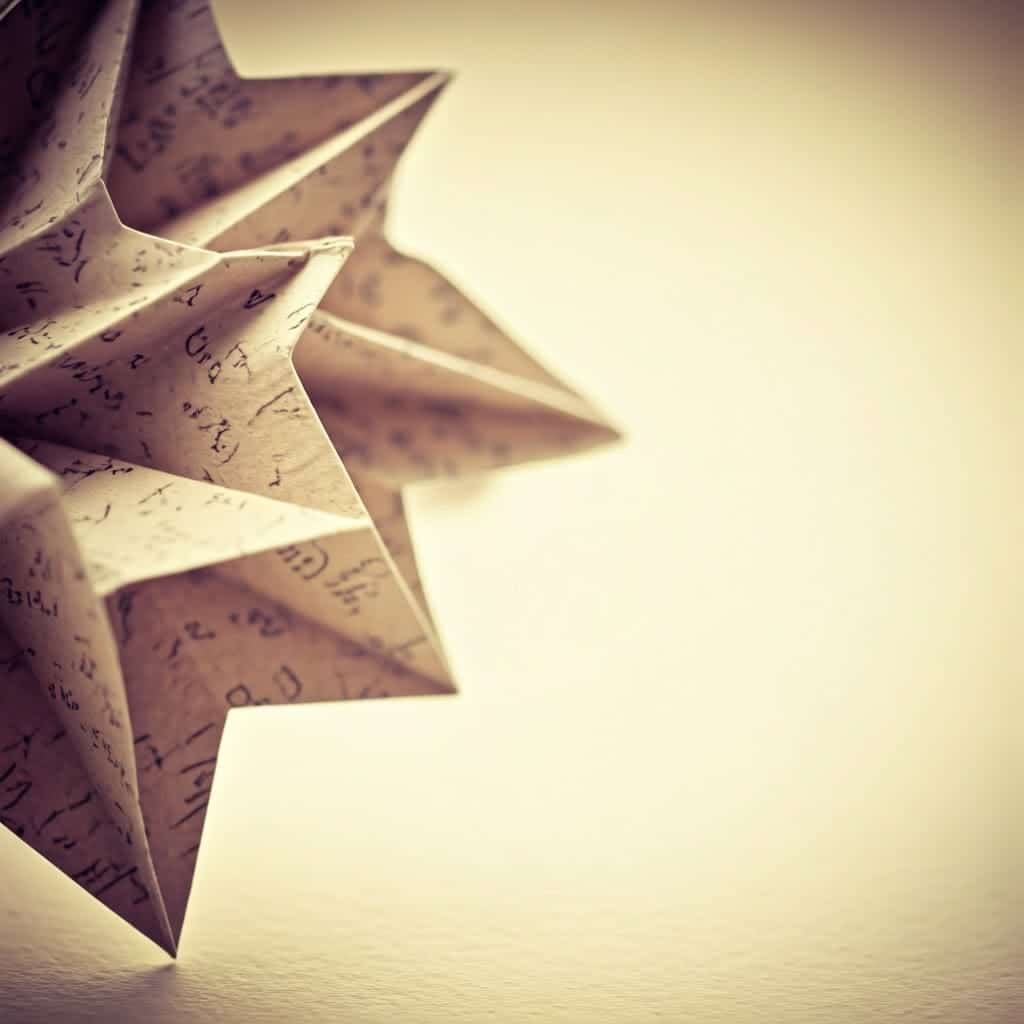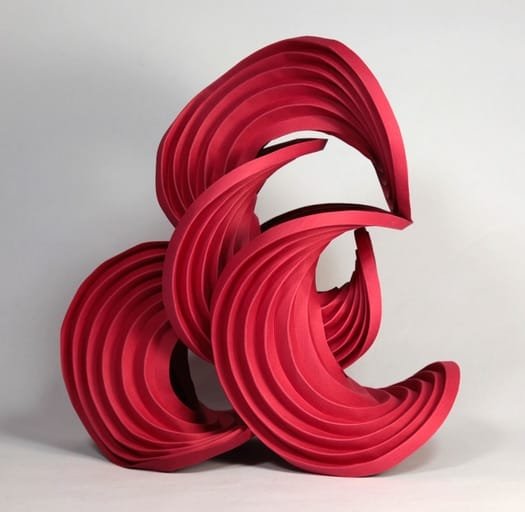Your cart is currently empty!
Stay in Touch!
Get updates about new artwork and upcoming events.
Get updates about new artwork and upcoming events.
—
by
In the realm of fine art, there are few mediums as versatile and thought-provoking as origami. At first glance, origami may seem like a simple craft—just folded paper, delicately shaped into birds, flowers, or geometric forms. Yet, beneath this simplicity lies an intersection between artistic expression and scientific precision.
Art collectors seek pieces that not only captivate the eye but also challenge the mind. Origami, in its dual nature, offers both of these qualities. It is an art form for scientists, thanks to its geometric structure and mathematical foundations. At the same time, it is a science for artists, who use its structured folds to create works of emotional depth and visual intrigue. This duality is what makes origami such a compelling addition to any fine art collection.

Origami, at its core, is a study in precision. Folding a sheet of paper may not seem complex, but it involves a deep understanding of geometry, symmetry, and structure. For scientists, this precision is not just a matter of aesthetics; it speaks to the underlying principles of mathematics and logic that govern the physical world.
At the heart of origami lies geometry, the branch of mathematics that deals with shapes, angles, and spatial relationships. When you fold a piece of paper into an crane or a modular design, you are essentially manipulating the plane of the paper into three-dimensional forms based on geometric rules.
One of the most well-known mathematical principles in origami is Huzita-Hatori’s Axioms, a set of rules that define how paper can be folded. These axioms are analogous to Euclid’s postulates in geometry and describe how folds relate to each other in terms of points, lines, and angles. Scientists, particularly mathematicians, have long been fascinated by how origami adheres to these principles, turning the simple act of folding paper into a visual representation of mathematical theory.

In fact, origami has been used to solve complex mathematical problems. For example, origami has been used to explore the concept of flat-foldability, which addresses whether a crease pattern can be folded flat without overlapping. This problem extends into practical applications, such as designing foldable structures in architecture and engineering.
For art collectors, understanding the mathematical underpinnings of origami adds an extra layer of appreciation to the work. Owning a piece of origami fine art is both about admiring its beauty and recognizing the complex geometric principles that give the work its form. Each fold, crease, and angle is a testament to the artist’s ability to balance mathematical precision with creative intuition.
Beyond its mathematical elegance, origami has captured the attention of scientists in fields like engineering, robotics, and even space exploration. The reason for this interest lies in the structural properties of origami. Paper, when folded correctly, becomes a strong, durable structure capable of withstanding significant force.
Origami-inspired designs are used to create deployable structures—objects that can be folded into a compact form and then expanded when needed. This concept is particularly useful in space missions, where equipment must be lightweight and easily stowed. Scientists at NASA have developed solar panels and telescopes based on origami designs that can be folded for transport and then unfolded in space.
Medical researchers, too, have found practical uses for origami. The principles of folding are applied in the development of stents and medical implants, which are folded and inserted into the body before expanding to their full size. Origami’s precision and reliability make it an ideal model for designing these life-saving devices.
For those who collect fine art, the fact that origami is used in such cutting-edge scientific applications elevates its significance. A piece of origami art is not just an aesthetic object; it represents a meeting point between art and innovation. It’s a reminder that art, like science, has the power to solve problems, inspire discovery, and push the boundaries of human creativity.
When scientists look at origami, they see more than just folded paper; they see a manifestation of natural laws. Origami’s geometric patterns echo the shapes found in nature, from the spirals of seashells to the symmetry of snowflakes. The folds that create origami’s delicate forms are guided by the same mathematical principles that govern the growth of plants and the formation of crystals.
This connection between art and nature is what draws many scientists to origami. It’s a way of exploring the beauty of the natural world through a medium that combines logic and creativity. The precision of each fold mirrors the perfection of natural forms, making origami an ideal representation of the intersection between art and science.
For collectors of fine art, this natural elegance is what makes origami such a compelling medium. The geometric forms and patterns found in origami are not just aesthetically pleasing—they evoke the harmony and order found in nature itself. By adding origami art to your collection, you are embracing a medium that reflects the beauty of both the natural and the mathematical worlds.

While scientists are drawn to origami for its mathematical precision, artists see it as a medium that allows for endless creative possibilities. Origami is, in many ways, the ultimate canvas for artistic expression. It begins with a blank sheet of paper, and through the artist’s skillful manipulation, that paper is transformed into a three-dimensional work of art. The constraints of folding may seem limiting, but for artists, these constraints offer the perfect challenge—an opportunity to push the boundaries of what paper can become.
For artists, origami is more than just a series of folds; it’s a journey of exploration and experimentation. Each fold is a deliberate choice, a step in a process that requires both precision and intuition. The artist must balance technical skill with creative vision, using the limitations of the medium to their advantage.
In many ways, the process of creating origami mirrors the scientific method. Artists begin with a hypothesis—a vision of what they want to create. They experiment with different folds, testing how the paper responds to their manipulation. They adjust and refine their techniques, learning from each attempt until they achieve the desired result. This iterative process is what makes origami so dynamic and rewarding for artists.

The beauty of origami lies in its unpredictability. While the artist may have a clear vision of the final piece, the act of folding always introduces an element of surprise. The paper itself becomes a collaborator in the creative process, offering unexpected possibilities and challenges. This interplay between control and spontaneity is what gives origami its unique charm and why it resonates so deeply with artists.
For art collectors, the creative process behind origami is just as important as the final product. When you acquire an origami piece, you are not just purchasing a work of fine art—you are investing in the artist’s creative journey. Each fold represents a moment of discovery, a decision that shaped the piece into its final form. By owning an origami artwork, you are participating in that journey, experiencing the artist’s vision and craftsmanship firsthand.
While origami may be rooted in mathematical principles, it is ultimately a form of artistic expression. Artists use origami to tell stories, convey emotions, and explore abstract ideas. The folds and creases in an origami sculpture are not just structural elements; they are the artist’s way of communicating their inner world.
For example, consider the use of color and texture in origami fine art. While traditional origami often uses plain, unadorned paper, contemporary artists have pushed the boundaries by incorporating painted and mixed media papers. These additions bring a new level of depth and emotion to the work, transforming the folded paper into a canvas for personal expression.
Artists also use origami to explore themes of resilience, transformation, and growth. The process of folding paper into intricate shapes mirrors the human experience of overcoming challenges and finding beauty in adversity. Each fold represents a moment of change, a step in a journey that leads to a new form. This symbolism resonates deeply with both artists and collectors, making origami a powerful medium for storytelling.
For collectors of fine art, owning an origami piece is a way to connect with the artist’s emotional and creative process. The folds and shapes in the artwork are not just decorative—they carry meaning, evoking feelings of transformation, resilience, and hope. By adding origami art to your collection, you are investing in a piece that speaks to both the intellect and the heart.
One of the most exciting aspects of origami is its versatility. While it may have originated as a traditional Japanese craft, contemporary artists have reimagined origami as a medium for fine art, pushing its boundaries in new and innovative ways.
For example, modular origami involves creating complex structures from multiple folded units, often resulting in intricate geometric patterns. These works are not only visually stunning but also demonstrate the artist’s mastery of form and structure. Modular origami is particularly appealing to collectors who appreciate the balance between artistic creativity and mathematical precision.
Another exciting development in origami fine art is the incorporation of mixed media. Artists are experimenting with different materials, such as wood, fabric, and metal, to create hybrid works that blend origami with other art forms. These pieces challenge traditional notions of what origami can be, offering collectors a unique and contemporary take on this ancient art form.
For collectors, the versatility of origami means that there is always something new and exciting to discover. Whether you are drawn to the precision of geometric designs or the emotional depth of abstract sculptures, origami offers endless possibilities for artistic expression. By investing in origami fine art, you are not only acquiring a beautiful and thought-provoking piece—you are supporting a medium that continues to evolve and inspire.
In the world of fine art, origami occupies a unique space at the intersection of art and science. Its mathematical foundations appeal to those who appreciate precision and structure, while its creative possibilities make it a powerful medium for artistic expression. For collectors, origami offers the best of both worlds—a work of art that challenges the mind and speaks to the soul.
By adding origami fine art to your collection, you are embracing a medium that has captivated both artists and scientists for centuries. You are investing in a piece that not only embodies beauty and craftsmanship but also reflects the profound connection between art and the natural world. Origami is more than just folded paper—it is a testament to the power of human creativity and ingenuity.
Whether you are drawn to the elegance of geometric patterns or the emotional depth of abstract forms, origami fine art offers something for every collector. Its versatility, precision, and emotional resonance make it a valuable addition to any fine art collection. By investing in origami, you are supporting a medium that continues to push the boundaries of artistic expression, offering new insights into the relationship between art and science.
In conclusion, origami fine art is a medium that transcends its humble beginnings as a traditional craft. It has evolved into a sophisticated and versatile form of artistic expression, offering both intellectual challenge and emotional depth. For collectors of fine art, origami represents a unique opportunity to explore the intersection of creativity, mathematics, and natural beauty. Whether you are a scientist seeking precision or an artist drawn to emotional storytelling, origami fine art has something to offer everyone.